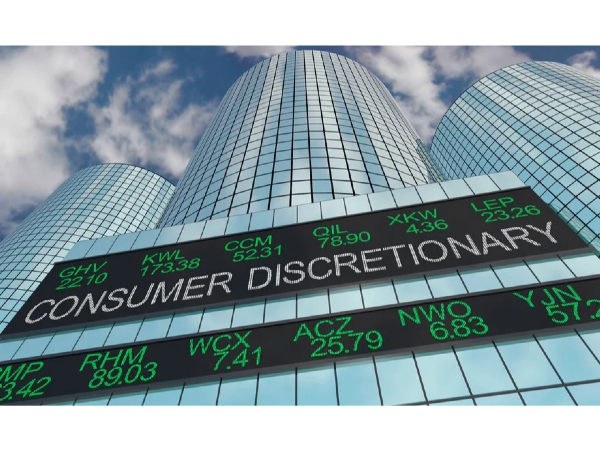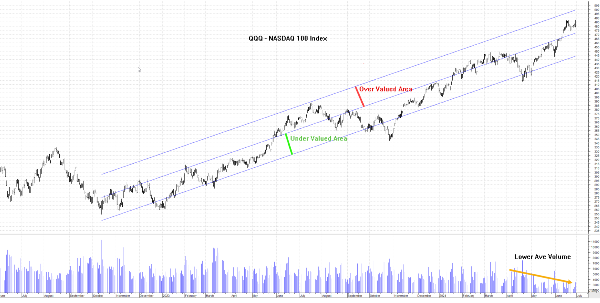What are Safe Stocks?
Safe stocks are a cornerstone for conservative investors seeking stability and a consistent income stream. These investments are known for their lower volatility compared to the broader market, making them attractive during uncertain economic times. Safe stocks typically belong to well-established companies that operate in defensive industries such as utilities, consumer staples, or healthcare. Their dependable nature helps investors mitigate the risks associated with more speculative or volatile stocks, making them a reliable choice for preserving wealth.
One of the defining characteristics of safe stocks is their strong history of consistent dividend payments. Companies that offer safe stocks usually have a stable financial position, with healthy balance sheets and steady revenue streams. This allows them to distribute dividends to shareholders regularly, even during economic downturns. Blue-chip stocks, such as Procter & Gamble and Johnson & Johnson, are prime examples, as they are renowned for their financial resilience and unwavering commitment to rewarding investors.
In addition to providing steady income, safe stocks can act as a hedge against inflation and market volatility. Inflation erodes the purchasing power of money, but dividend-paying stocks often outpace inflation over the long term. Moreover, during periods of market turbulence, safe stocks generally experience less dramatic price swings. This combination of income generation and stability makes them a vital component of a balanced and diversified portfolio.
For investors prioritizing financial security and long-term growth, safe stocks offer a dependable solution. Their ability to provide consistent income, weather economic uncertainties, and maintain value over time makes them a compelling choice. Whether you're a retiree seeking reliable income or a cautious investor looking to reduce risk, safe stocks can serve as a robust foundation for achieving your financial goals.
Identifying Safe Stocks
Identifying safe stocks begins with looking for companies that have a long history of paying consistent dividends. Such companies often belong to sectors like consumer staples, utilities, or healthcare, which are less sensitive to economic downturns. A strong dividend history reflects financial stability and the company's commitment to sharing profits with its shareholders. By focusing on firms with a proven track record, investors can prioritize income reliability and mitigate risks.
Another crucial factor is a company's financial health, marked by a strong balance sheet, low debt levels, and a stable cash flow. Companies with manageable debt and steady income streams are better equipped to weather economic uncertainties. These financial metrics help ensure that the company can sustain its operations and continue rewarding its investors, even during challenging times.
It's also important to identify companies with a clear competitive advantage and a proven business model. Firms that dominate their markets or have unique offerings often enjoy sustained profitability. For instance, companies with strong brand recognition, patent protections, or cost leadership are more likely to maintain their market position, making them safer investments.
Lastly, investors should consider companies with strong leadership and a clear vision for the future. A skilled management team can navigate complexities, adapt to industry shifts, and foster long-term growth. Additionally, focusing on companies in stable industries with growing demand, like renewable energy or healthcare, can further enhance portfolio resilience. Thorough research and a disciplined approach are essential to identifying stocks that can balance growth and security effectively.
Types of Safe Stocks
When it comes to safe stocks, Dividend Aristocrats are an excellent choice for risk-averse investors. These companies have consistently increased their dividend payments for at least 25 consecutive years, showcasing their financial stability and commitment to shareholder returns. Dividend Aristocrats often operate in established industries with predictable revenue streams, making them reliable investments. Examples include household names like Procter & Gamble and Coca-Cola, which provide both income and resilience during economic downturns.
Real Estate Investment Trusts (REITs) are another category of safe stocks that appeal to investors seeking steady income. REITs own and manage income-generating properties such as residential apartments, office buildings, and retail centers. By law, REITs must distribute at least 90% of their taxable income to shareholders in the form of dividends. This ensures consistent payouts and makes REITs particularly attractive during times of inflation, as property values and rental income often rise in tandem with inflation.
Utility companies are widely regarded as safe investments due to their essential role in providing electricity, gas, and water. These companies operate in regulated industries, which allows them to maintain stable cash flows and offer consistent dividends. Utility stocks are typically less volatile, as their services are always in demand, regardless of economic conditions. Companies like Duke Energy and Southern Company are prime examples of dependable utility stocks that can anchor a portfolio.
Consumer staples companies are also a staple for conservative investors. These firms produce essential goods and services such as food, beverages, and household products, which remain in high demand regardless of economic fluctuations. Consumer staples stocks are less affected by market cycles and offer steady growth opportunities. Companies like Colgate-Palmolive and Unilever exemplify the resilience and stability that consumer staples stocks bring to a portfolio.
Healthcare companies round out the list of safe stocks by providing medical products and services that are indispensable. The healthcare sector benefits from long-term demand driven by aging populations, advancements in medical technology, and growing health awareness. Companies such as Johnson & Johnson and Pfizer are leaders in this space, offering consistent dividends and growth potential. Healthcare stocks provide an added layer of stability to a portfolio, thanks to their essential nature and promising innovation.
Red Flags to Watch Out for When Searching for Safe Stocks
When searching for safe stocks, high debt levels can serve as a significant red flag. Companies burdened with excessive debt may struggle to meet their financial obligations, especially during economic downturns. This can jeopardize their ability to maintain consistent dividend payments, a hallmark of safe stocks. Examining metrics such as the debt-to-equity ratio and interest coverage ratio can help investors assess a company's financial stability and determine whether its debt levels are manageable.
Unstable cash flows are another critical warning sign for investors seeking safe stocks. Companies that experience erratic or unpredictable cash inflows may find it challenging to sustain their operations, let alone provide steady dividend payouts. Cash flow statements and historical trends are valuable tools for identifying patterns of instability. Reliable cash flows are essential for a company's resilience, particularly during periods of market volatility.
Lastly, weak management teams and a lack of competitive advantages should not be overlooked. Incompetent leadership can result in poor decision-making, mismanagement of resources, and deteriorating financial performance. Similarly, companies without a clear competitive edge may face difficulties in maintaining market share, leaving them vulnerable to economic pressures. Investors should prioritize companies with experienced leadership, a proven track record, and unique advantages such as strong brand recognition, cost efficiencies, or technological innovation to mitigate these risks.
Investing Strategies Using Safe Stocks
Safe stocks are integral to investment strategies that prioritize stability and risk mitigation, starting with portfolio diversification. By spreading investments across various asset classes and industries—such as utilities, consumer staples, and healthcare—investors can reduce the impact of sector-specific downturns on their portfolio. Safe stocks act as a stabilizing force, balancing out the risks associated with more volatile investments like growth stocks or speculative assets. Diversification ensures that even during market turbulence, your portfolio remains resilient and capable of steady returns.
Long-term investing is another strategy that benefits from incorporating safe stocks. These stocks, known for their lower volatility and consistent dividends, offer a reliable way to grow wealth over time. Investors can enhance their strategy by adopting dollar-cost averaging, which involves committing a fixed amount of money to safe stocks at regular intervals. This approach reduces the impact of short-term market fluctuations, allowing investors to accumulate shares at a range of prices. Regularly monitoring and adjusting your portfolio is also crucial to ensure it remains aligned with financial goals, enabling a balanced mix of safety and growth potential.
Common Questions and Concerns
Safe stocks are a popular choice for investors seeking stability and consistent returns, but they often raise important questions and concerns. From understanding what makes a stock "safe" to identifying potential risks and red flags, navigating this investment category requires thoughtful analysis and careful consideration. Whether you're a seasoned investor looking to reinforce your portfolio or a newcomer exploring safer options, addressing these common questions and concerns can help you make informed decisions and confidently pursue your financial goals.
What are the safest stock to invest in?
The safest stocks to invest in are typically those belonging to well-established companies with a history of financial stability and consistent performance. Dividend Aristocrats, for example, are a popular choice as they have increased their dividend payouts for at least 25 consecutive years, showcasing their resilience and commitment to shareholders. Companies in defensive sectors like consumer staples, utilities, and healthcare are also considered safe investments due to their steady demand, even during economic downturns. Examples include Procter & Gamble, Johnson & Johnson, and Duke Energy, which are known for their reliable dividends and stable growth.
Investors seeking safety often prioritize stocks with strong financial health, low debt levels, and stable cash flows. These characteristics ensure that the company can sustain its operations and continue rewarding shareholders, even in challenging economic conditions. Additionally, companies with a competitive advantage, such as strong brand recognition or unique offerings, are more likely to maintain their market position and provide consistent returns. By focusing on these attributes, investors can build a portfolio that balances stability and long-term growth potential.
How do I identify safe stocks?
Identifying safe stocks requires careful attention to key financial and business indicators that signal stability and reliability. Start by seeking companies with a long history of paying consistent dividends, as this demonstrates their financial health and commitment to shareholders. Companies with strong balance sheets, low debt levels, and stable cash flows are also ideal, as they are better equipped to weather economic uncertainties and continue rewarding investors.
Additionally, focus on companies with a proven competitive advantage and a solid business model. These firms often dominate their markets or have unique offerings that ensure sustained profitability. A skilled management team with a clear vision for long-term growth adds to the company's reliability. Finally, prioritize companies operating in stable industries, such as utilities, healthcare, or consumer staples, as their services remain in demand regardless of economic fluctuations. By analyzing these factors, you can identify stocks that balance security and growth potential effectively.
What are the benefits of investing in safe stocks?
Investing in safe stocks offers numerous benefits, particularly for those seeking stability and consistent returns. One key advantage is the reduced volatility these stocks provide, making them less susceptible to market fluctuations. Safe stocks are typically issued by established companies in stable industries like utilities, consumer staples, or healthcare, ensuring a reliable source of income even during economic downturns. This dependable nature makes them a cornerstone for wealth preservation and risk management.
Additionally, safe stocks often come with consistent dividend payments, offering investors a steady stream of income. These dividends can act as a hedge against inflation, as they help maintain purchasing power over time. Furthermore, safe stocks are ideal for long-term investments, as they tend to provide gradual but reliable growth over the years. By incorporating these stocks into a diversified portfolio, investors can balance risk while achieving their financial goals. Safe stocks are an excellent choice for building financial security and achieving sustainable returns.
How do I balance risk and return when investing in safe stocks?
Balancing risk and return when investing in safe stocks requires a thoughtful approach that aligns with your financial goals and risk tolerance. Start by diversifying your portfolio across multiple sectors and industries, such as utilities, healthcare, and consumer staples, which are known for stability. This diversification helps reduce risk by minimizing exposure to sector-specific downturns, ensuring steady returns from various sources.
Another strategy is to focus on high-quality companies with consistent dividend payments and strong financial metrics, such as low debt levels and stable cash flows. While these stocks provide reliable returns, it's important to balance them with growth-oriented investments that offer higher potential rewards. Regularly reviewing your portfolio and adjusting the mix based on market conditions and your evolving financial objectives can further optimize the balance between risk and return. This disciplined approach ensures your investments remain resilient while steadily contributing to your long-term financial success.
What are the tax implications of investing in safe stocks?
Investing in safe stocks can have several tax implications, primarily related to dividends and capital gains. Dividends received from safe stocks are often taxable as income, with the tax rate depending on whether they are classified as qualified or ordinary dividends. Qualified dividends are typically taxed at a lower rate, while ordinary dividends are taxed at the investor's regular income tax rate. It's essential to understand the classification of dividends to plan for potential tax liabilities effectively.
Additionally, when you sell safe stocks, any profit made is subject to capital gains tax. The rate depends on how long you've held the stock—short-term capital gains (for stocks held less than a year) are taxed at your regular income tax rate, while long-term capital gains (for stocks held over a year) are taxed at a lower rate. To minimize tax burdens, investors can consider strategies like holding stocks for the long term or investing through tax-advantaged accounts such as IRAs or 401(k)s. Consulting a tax professional can provide tailored advice based on your specific investment portfolio and financial goals.
Conclusion
Safe stocks are an invaluable asset for investors seeking financial stability and peace of mind. Their ability to provide a steady income and reduced volatility makes them a reliable choice, even during periods of economic uncertainty. By focusing on well-established companies with consistent performance, investors can safeguard their portfolios while achieving stable returns.
Through careful identification and strategic investment in safe stocks, you can effectively minimize risk and work towards your long-term financial goals. These investments can serve as the foundation of a resilient portfolio, offering a balance of stability and growth.
To maximize the benefits of safe stocks, remember to diversify your portfolio across different industries, focus on long-term growth, and regularly monitor your investments. Adjusting your strategy as needed ensures your financial goals remain on track while keeping your portfolio adaptable to changing market conditions. With a disciplined approach, safe stocks can help you build a secure and prosperous financial future.





























What are Safe Stocks?
Safe stocks are a cornerstone for conservative investors seeking stability and a consistent income stream. These investments are known for their lower volatility compared to the broader market, making them attractive during uncertain economic times. Safe stocks typically belong to well-established companies that operate in defensive industries such as utilities, consumer staples, or healthcare. Their dependable nature helps investors mitigate the risks associated with more speculative or volatile stocks, making them a reliable choice for preserving wealth.
One of the defining characteristics of safe stocks is their strong history of consistent dividend payments. Companies that offer safe stocks usually have a stable financial position, with healthy balance sheets and steady revenue streams. This allows them to distribute dividends to shareholders regularly, even during economic downturns. Blue-chip stocks, such as Procter & Gamble and Johnson & Johnson, are prime examples, as they are renowned for their financial resilience and unwavering commitment to rewarding investors.
In addition to providing steady income, safe stocks can act as a hedge against inflation and market volatility. Inflation erodes the purchasing power of money, but dividend-paying stocks often outpace inflation over the long term. Moreover, during periods of market turbulence, safe stocks generally experience less dramatic price swings. This combination of income generation and stability makes them a vital component of a balanced and diversified portfolio.
For investors prioritizing financial security and long-term growth, safe stocks offer a dependable solution. Their ability to provide consistent income, weather economic uncertainties, and maintain value over time makes them a compelling choice. Whether you're a retiree seeking reliable income or a cautious investor looking to reduce risk, safe stocks can serve as a robust foundation for achieving your financial goals.
Identifying Safe Stocks
Identifying safe stocks begins with looking for companies that have a long history of paying consistent dividends. Such companies often belong to sectors like consumer staples, utilities, or healthcare, which are less sensitive to economic downturns. A strong dividend history reflects financial stability and the company's commitment to sharing profits with its shareholders. By focusing on firms with a proven track record, investors can prioritize income reliability and mitigate risks.
Another crucial factor is a company's financial health, marked by a strong balance sheet, low debt levels, and a stable cash flow. Companies with manageable debt and steady income streams are better equipped to weather economic uncertainties. These financial metrics help ensure that the company can sustain its operations and continue rewarding its investors, even during challenging times.
It's also important to identify companies with a clear competitive advantage and a proven business model. Firms that dominate their markets or have unique offerings often enjoy sustained profitability. For instance, companies with strong brand recognition, patent protections, or cost leadership are more likely to maintain their market position, making them safer investments.
Lastly, investors should consider companies with strong leadership and a clear vision for the future. A skilled management team can navigate complexities, adapt to industry shifts, and foster long-term growth. Additionally, focusing on companies in stable industries with growing demand, like renewable energy or healthcare, can further enhance portfolio resilience. Thorough research and a disciplined approach are essential to identifying stocks that can balance growth and security effectively.
Types of Safe Stocks
When it comes to safe stocks, Dividend Aristocrats are an excellent choice for risk-averse investors. These companies have consistently increased their dividend payments for at least 25 consecutive years, showcasing their financial stability and commitment to shareholder returns. Dividend Aristocrats often operate in established industries with predictable revenue streams, making them reliable investments. Examples include household names like Procter & Gamble and Coca-Cola, which provide both income and resilience during economic downturns.
Real Estate Investment Trusts (REITs) are another category of safe stocks that appeal to investors seeking steady income. REITs own and manage income-generating properties such as residential apartments, office buildings, and retail centers. By law, REITs must distribute at least 90% of their taxable income to shareholders in the form of dividends. This ensures consistent payouts and makes REITs particularly attractive during times of inflation, as property values and rental income often rise in tandem with inflation.
Utility companies are widely regarded as safe investments due to their essential role in providing electricity, gas, and water. These companies operate in regulated industries, which allows them to maintain stable cash flows and offer consistent dividends. Utility stocks are typically less volatile, as their services are always in demand, regardless of economic conditions. Companies like Duke Energy and Southern Company are prime examples of dependable utility stocks that can anchor a portfolio.
Consumer staples companies are also a staple for conservative investors. These firms produce essential goods and services such as food, beverages, and household products, which remain in high demand regardless of economic fluctuations. Consumer staples stocks are less affected by market cycles and offer steady growth opportunities. Companies like Colgate-Palmolive and Unilever exemplify the resilience and stability that consumer staples stocks bring to a portfolio.
Healthcare companies round out the list of safe stocks by providing medical products and services that are indispensable. The healthcare sector benefits from long-term demand driven by aging populations, advancements in medical technology, and growing health awareness. Companies such as Johnson & Johnson and Pfizer are leaders in this space, offering consistent dividends and growth potential. Healthcare stocks provide an added layer of stability to a portfolio, thanks to their essential nature and promising innovation.
Red Flags to Watch Out for When Searching for Safe Stocks
When searching for safe stocks, high debt levels can serve as a significant red flag. Companies burdened with excessive debt may struggle to meet their financial obligations, especially during economic downturns. This can jeopardize their ability to maintain consistent dividend payments, a hallmark of safe stocks. Examining metrics such as the debt-to-equity ratio and interest coverage ratio can help investors assess a company's financial stability and determine whether its debt levels are manageable.
Unstable cash flows are another critical warning sign for investors seeking safe stocks. Companies that experience erratic or unpredictable cash inflows may find it challenging to sustain their operations, let alone provide steady dividend payouts. Cash flow statements and historical trends are valuable tools for identifying patterns of instability. Reliable cash flows are essential for a company's resilience, particularly during periods of market volatility.
Lastly, weak management teams and a lack of competitive advantages should not be overlooked. Incompetent leadership can result in poor decision-making, mismanagement of resources, and deteriorating financial performance. Similarly, companies without a clear competitive edge may face difficulties in maintaining market share, leaving them vulnerable to economic pressures. Investors should prioritize companies with experienced leadership, a proven track record, and unique advantages such as strong brand recognition, cost efficiencies, or technological innovation to mitigate these risks.
Investing Strategies Using Safe Stocks
Safe stocks are integral to investment strategies that prioritize stability and risk mitigation, starting with portfolio diversification. By spreading investments across various asset classes and industries—such as utilities, consumer staples, and healthcare—investors can reduce the impact of sector-specific downturns on their portfolio. Safe stocks act as a stabilizing force, balancing out the risks associated with more volatile investments like growth stocks or speculative assets. Diversification ensures that even during market turbulence, your portfolio remains resilient and capable of steady returns.
Long-term investing is another strategy that benefits from incorporating safe stocks. These stocks, known for their lower volatility and consistent dividends, offer a reliable way to grow wealth over time. Investors can enhance their strategy by adopting dollar-cost averaging, which involves committing a fixed amount of money to safe stocks at regular intervals. This approach reduces the impact of short-term market fluctuations, allowing investors to accumulate shares at a range of prices. Regularly monitoring and adjusting your portfolio is also crucial to ensure it remains aligned with financial goals, enabling a balanced mix of safety and growth potential.
Common Questions and Concerns
Safe stocks are a popular choice for investors seeking stability and consistent returns, but they often raise important questions and concerns. From understanding what makes a stock "safe" to identifying potential risks and red flags, navigating this investment category requires thoughtful analysis and careful consideration. Whether you're a seasoned investor looking to reinforce your portfolio or a newcomer exploring safer options, addressing these common questions and concerns can help you make informed decisions and confidently pursue your financial goals.
What are the safest stock to invest in?
The safest stocks to invest in are typically those belonging to well-established companies with a history of financial stability and consistent performance. Dividend Aristocrats, for example, are a popular choice as they have increased their dividend payouts for at least 25 consecutive years, showcasing their resilience and commitment to shareholders. Companies in defensive sectors like consumer staples, utilities, and healthcare are also considered safe investments due to their steady demand, even during economic downturns. Examples include Procter & Gamble, Johnson & Johnson, and Duke Energy, which are known for their reliable dividends and stable growth.
Investors seeking safety often prioritize stocks with strong financial health, low debt levels, and stable cash flows. These characteristics ensure that the company can sustain its operations and continue rewarding shareholders, even in challenging economic conditions. Additionally, companies with a competitive advantage, such as strong brand recognition or unique offerings, are more likely to maintain their market position and provide consistent returns. By focusing on these attributes, investors can build a portfolio that balances stability and long-term growth potential.
How do I identify safe stocks?
Identifying safe stocks requires careful attention to key financial and business indicators that signal stability and reliability. Start by seeking companies with a long history of paying consistent dividends, as this demonstrates their financial health and commitment to shareholders. Companies with strong balance sheets, low debt levels, and stable cash flows are also ideal, as they are better equipped to weather economic uncertainties and continue rewarding investors.
Additionally, focus on companies with a proven competitive advantage and a solid business model. These firms often dominate their markets or have unique offerings that ensure sustained profitability. A skilled management team with a clear vision for long-term growth adds to the company's reliability. Finally, prioritize companies operating in stable industries, such as utilities, healthcare, or consumer staples, as their services remain in demand regardless of economic fluctuations. By analyzing these factors, you can identify stocks that balance security and growth potential effectively.
What are the benefits of investing in safe stocks?
Investing in safe stocks offers numerous benefits, particularly for those seeking stability and consistent returns. One key advantage is the reduced volatility these stocks provide, making them less susceptible to market fluctuations. Safe stocks are typically issued by established companies in stable industries like utilities, consumer staples, or healthcare, ensuring a reliable source of income even during economic downturns. This dependable nature makes them a cornerstone for wealth preservation and risk management.
Additionally, safe stocks often come with consistent dividend payments, offering investors a steady stream of income. These dividends can act as a hedge against inflation, as they help maintain purchasing power over time. Furthermore, safe stocks are ideal for long-term investments, as they tend to provide gradual but reliable growth over the years. By incorporating these stocks into a diversified portfolio, investors can balance risk while achieving their financial goals. Safe stocks are an excellent choice for building financial security and achieving sustainable returns.
How do I balance risk and return when investing in safe stocks?
Balancing risk and return when investing in safe stocks requires a thoughtful approach that aligns with your financial goals and risk tolerance. Start by diversifying your portfolio across multiple sectors and industries, such as utilities, healthcare, and consumer staples, which are known for stability. This diversification helps reduce risk by minimizing exposure to sector-specific downturns, ensuring steady returns from various sources.
Another strategy is to focus on high-quality companies with consistent dividend payments and strong financial metrics, such as low debt levels and stable cash flows. While these stocks provide reliable returns, it's important to balance them with growth-oriented investments that offer higher potential rewards. Regularly reviewing your portfolio and adjusting the mix based on market conditions and your evolving financial objectives can further optimize the balance between risk and return. This disciplined approach ensures your investments remain resilient while steadily contributing to your long-term financial success.
What are the tax implications of investing in safe stocks?
Investing in safe stocks can have several tax implications, primarily related to dividends and capital gains. Dividends received from safe stocks are often taxable as income, with the tax rate depending on whether they are classified as qualified or ordinary dividends. Qualified dividends are typically taxed at a lower rate, while ordinary dividends are taxed at the investor's regular income tax rate. It's essential to understand the classification of dividends to plan for potential tax liabilities effectively.
Additionally, when you sell safe stocks, any profit made is subject to capital gains tax. The rate depends on how long you've held the stock—short-term capital gains (for stocks held less than a year) are taxed at your regular income tax rate, while long-term capital gains (for stocks held over a year) are taxed at a lower rate. To minimize tax burdens, investors can consider strategies like holding stocks for the long term or investing through tax-advantaged accounts such as IRAs or 401(k)s. Consulting a tax professional can provide tailored advice based on your specific investment portfolio and financial goals.
Conclusion
Safe stocks are an invaluable asset for investors seeking financial stability and peace of mind. Their ability to provide a steady income and reduced volatility makes them a reliable choice, even during periods of economic uncertainty. By focusing on well-established companies with consistent performance, investors can safeguard their portfolios while achieving stable returns.
Through careful identification and strategic investment in safe stocks, you can effectively minimize risk and work towards your long-term financial goals. These investments can serve as the foundation of a resilient portfolio, offering a balance of stability and growth.
To maximize the benefits of safe stocks, remember to diversify your portfolio across different industries, focus on long-term growth, and regularly monitor your investments. Adjusting your strategy as needed ensures your financial goals remain on track while keeping your portfolio adaptable to changing market conditions. With a disciplined approach, safe stocks can help you build a secure and prosperous financial future.